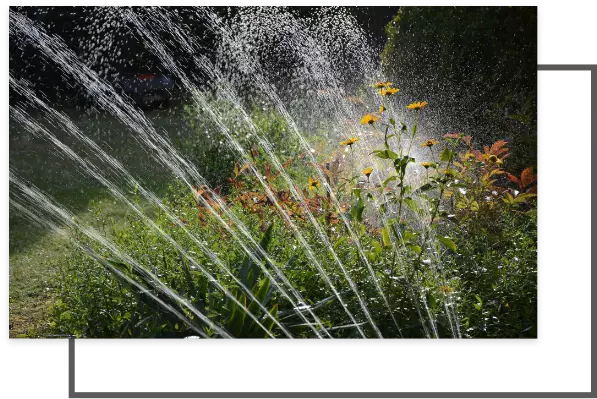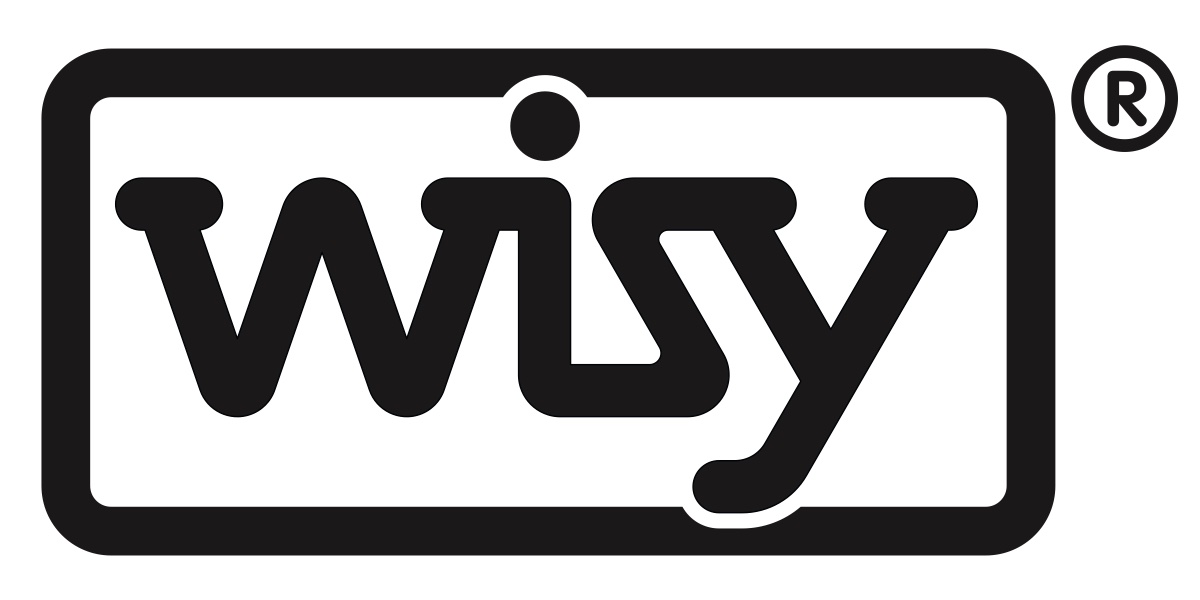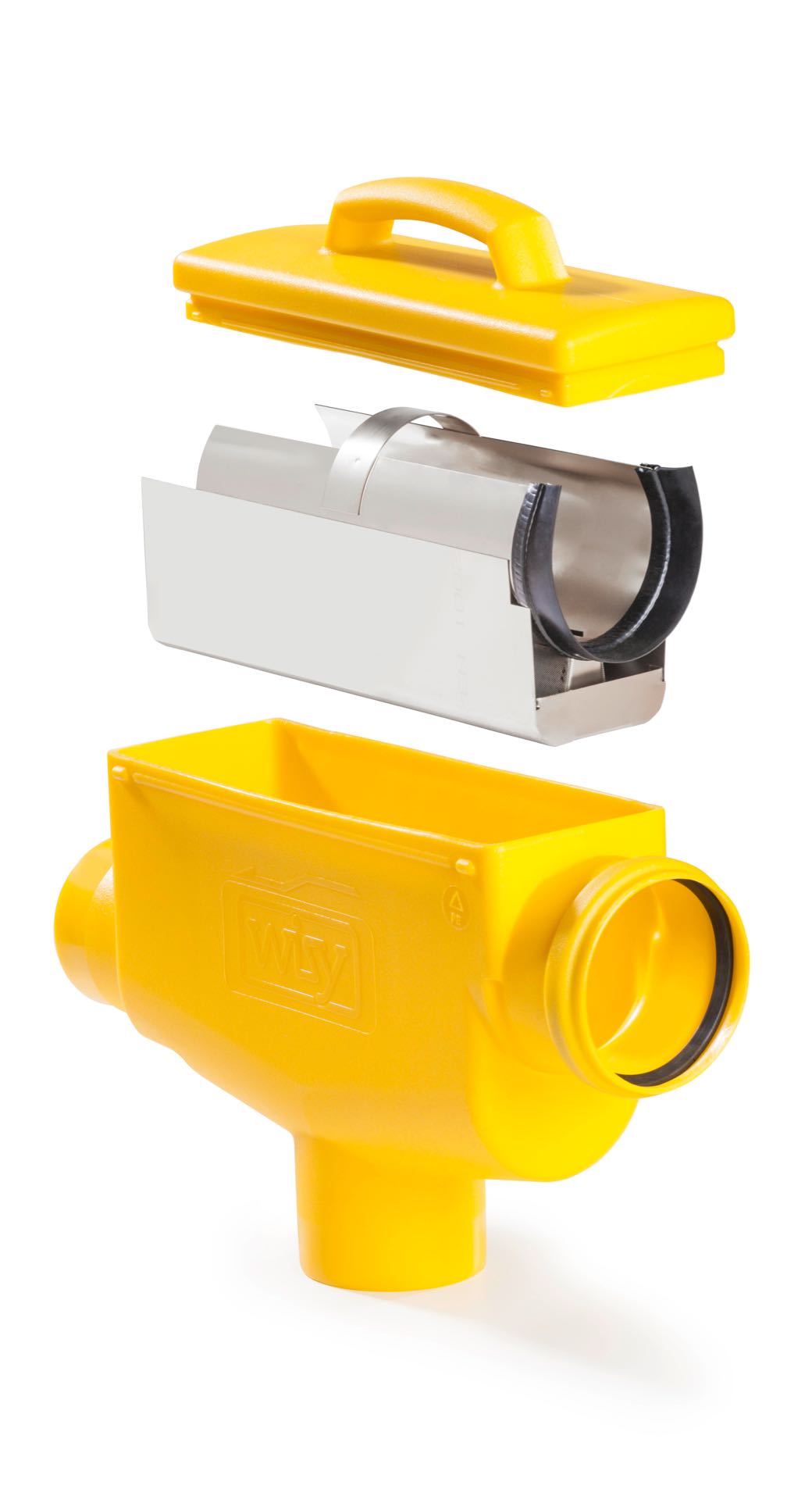Product information
Cistern filter LineAR 100
Whether in a new building or for retrofitting, the space-saving LineAr Filter 100 is easy to install and does not require any additional earthworks.

The cistern filter in the rainwater storage tank
Clean rainwater all year round: that is the wish of many homeowners who are considering rainwater harvesting. With a cistern filter as part of the rainwater system, this wish can be fulfilled particularly easily. It doesn't matter whether the rainwater storage tank already exists or is being newly built.
Learn here how easy it is to collect only clean rainwater in the cistern with a cistern filter.
What does a cistern filter do?
The cistern filter separates dirt from rainwater and only lets clean water into the cistern. The water coming from the roof flows into the cistern filter from one side and flushes leaves and dirt out the other side into the cistern overflow. Only freshly filtered, clean rainwater flows down into the cistern.
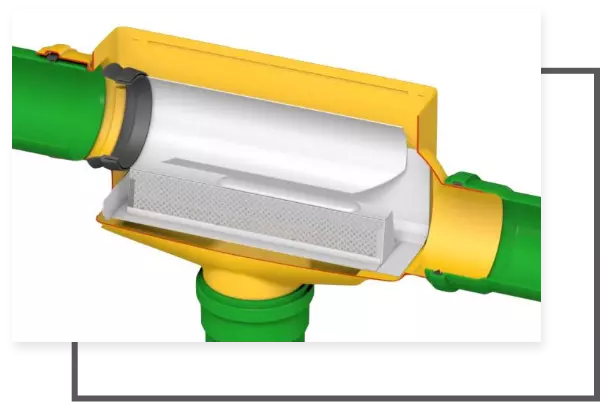
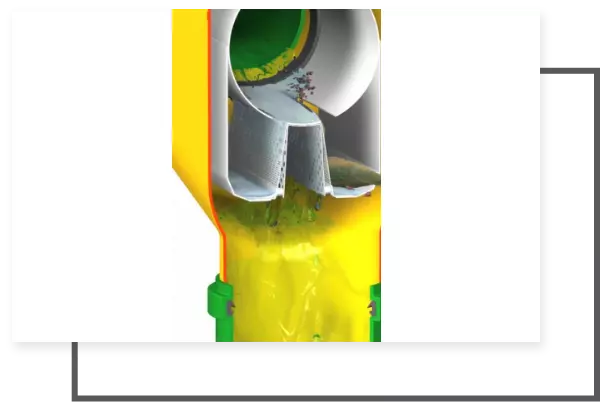
Why filter rainwater with a cistern filter?
The cistern filter shows its advantages when the course of the pipe is predetermined and only a small height offset is possible between the inlet and outlet. This is usually the case when the planning has already been completed or the filter is to be installed later. For the cistern filter, the existing pipe run does not have to be changed at all or only slightly.
Rainwater that is stored in a rainwater storage tank should be treated with a special filter for rainwater such as the cistern filter in order to remove all dirt particles before water is stored. When it comes from the roof, rainwater often brings with it organic components, such as leaves, moss or insects. These should be separated with a cistern filter, because otherwise they start to decompose in the cistern and reduce the water quality.
No additional shaft for the rainwater filter
As the name suggests, the cistern filter is placed directly in the rainwater tank. This saves an additional shaft with cover in the driveway or garden. All components of the 4-stage rainwater purification system, including the cistern filter, are thus located in the tank. Specifically, the cistern filter is located in the dome shaft of the rainwater storage tank, i.e. in the upper, tapered area of the cistern or in an attached shaft extension of the storage tank.
How is the cistern filter installed?
After the rainwater flows down from the roof through downpipes, it changes its direction of flow to horizontal below the surface. It then flows through rainwater pipes to the cistern.
There, the pipe is fed through an sideward opening into the manhole of the cistern so that it protrudes a little. The cistern filter with its sleeve is pushed onto this end of the pipe. The opposite end of the cistern filter is connected to the continuing pipe with a push-over sleeve. This pipe also protrudes a short distance into the manhole shaft from the other side. Later, when the storage tank is full, excess rainwater will flow through this pipe together with the dirt. It is connected to the drain to the sewer.
If excess water is to be infiltrated, the infiltration system can be connected to a separate, slightly deeper pipe. This ensures that only clean water reaches the infiltration system, which significantly extends the service life of the infiltration system.
The right rainwater filter for your project
If you are still unsure whether a cistern filter is the right choice for your project or if you need a different rainwater filter, please contact us.
As an experienced manufacturer for all components of a professional rainwater utilisation system, selecting the right rainwater filter is part of our daily business. We will be happy to support you with any questions you may have about your future rainwater system.
We at WISY look forward to your enquiry and to being able to advise you!
